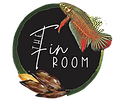| Synonyms | None |
| Distribution | Brazil, Colombia, Peru, and Venezuela. |
| Sexual Dimorphism | In mature fish, the males are larger, more colourful, and develop extended anal and dorsal fins. |
| Maximum Size | 4cm (1.6") |
| Temperature | 24-28 deg C (75-82 deg F) |
| Water Parameters | Soft and acidic. pH: 5.0-6.5, dH: up to 5 degrees. Peat filtration suggested. |
| Compatibility | Specialist community |
| Lighting | Dim (brighter lighting should be diffused with plants) |
Description
Care
The Black Morpho Tetra has a widespread distribution throughout the upper Solimões, upper Negro, and upper Orinoco River basins. Here, it is found in sluggish forest streams with dense marginal vegetation and an abundance of submerged roots and leaf litter. The water in the native habitat is soft and acidic, and stained a tea colour from the tannins in the decaying leaves and wood. The aquarium should be mature, spacious, and furnished with a dark sandy substrate, tangles of driftwood, and areas of dense planting. The driftwood will create lots of shady areas/visual barriers, and the tannins that are gradually released should help to acidify the water whilst giving it a natural, clear tea-colour. Peat filtration can also help in this respect, as would the addition of some dried Indian Almond Leaves (Terminalia catappa) on the substrate, but these will require periodic replacement. Unlike the vast majority of small characins, the Black Morpho Tetra is not a shoaling species; instead, the males are territorially aggressive towards one another. For this reason it is best to keep several females to every male, and ensure there are plenty of broken lines-of-sight amongst the decor so that rival males can retreat if necessary. Such displays are dazzling, with the males showing their best colours as they vie for female attention, and in spacious quarters with a multitude of hiding places, no harm should ensue. However, it is important to allow around 30cm x 30cm of territory per male, so the more males you wish to keep, the larger the tank must be if fin damage is to be avoided. These delicate fish occupy the mid-lower level of the aquarium, and will be at their best in a species-only set-up, but if tankmates are desired, opt for other small characins such as Carnegiella, Copella, Hemigrammus, Hyphessobrycon, Moenkhausia, or Nannostomus spp. that occupy the mid-upper levels, along with small loricariids such as Otocinclus spp. Other benthic species are best avoided due to territorial competition. May also be seen on sale as the Black Darter Tetra. **Not recommended for beginners.**
Feeding
Micropredator which must be provided with small sized meaty frozen foods such as mini-bloodworm, daphnia, cyclops, and baby brineshrimp (Artemia nauplii). Unlikely to take dried foods, so only purchase if you can supply frozen foods on an ongoing basis.
Breeding
This species has been bred in the home aquarium, although it is moderately difficult and not a frequent occurrence. The aquarium should be set up with very soft, acidic water and the fish provided with plenty of small caves fashioned out of rocks, pvc tubes, flowerpots on their side etc. The fish should be conditioned well on regular feedings of small live or frozen foods. Each male will select a territory containing a cave and will defend the area from its rivals, whilst taking on intense nuptial colouration and developing white tips to the pelvic fins. Female fish that are ready to spawn may darken in appearance and will be noticeably fuller bellied. During courtship, the female will deposit eggs on the roof or side of the chosen cave, and these are then fertilised and guarded by the male. The eggs should hatch with 3-5 days, and once free-swimming, can be offered baby brineshrimp (Artemia nauplii) and microworm. It is at this point that paternal care ceases, and the fry should be carefully moved to a separate growing-on tank with matching water parameters.



















